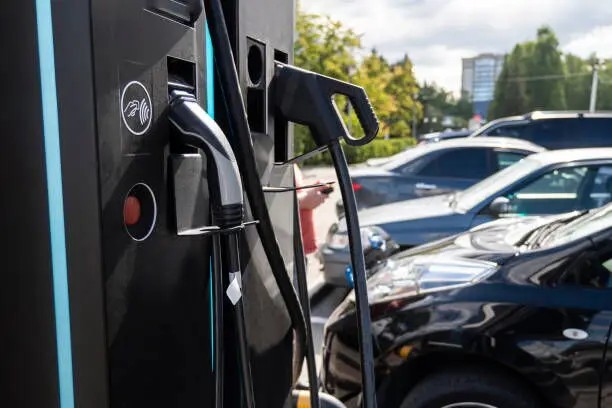Introduction
The electric vehicle (EV) market is accelerating at an unprecedented pace. With more consumers embracing electric mobility, the need for efficient, fast, and reliable charging infrastructure has never been greater. This surge presents a valuable opportunity for businesses, municipalities, and fleet operators to invest in DC fast charging solutions that enable energy replenishment in minutes—not hours.
As a leading EV charger manufacturer, one of the most frequently asked questions we receive is:
“What range of DC EV charger should I choose?”
This is a critical consideration for deploying chargers in commercial or public environments such as shopping centers, expressway rest stops, logistics depots, or workplace parking lots. Choosing the right power range ensures a seamless charging experience, maximizes equipment ROI, and reduces vehicle downtimes.
In this guide, we’ll break down the essentials of DC fast charging, explain how power ratings impact performance, examine key influencing factors like battery capabilities and ambient conditions, and offer practical recommendations for different use cases.
DC Fast Charging: The Basics
What Is DC Fast Charging?
DC fast charging refers to electric vehicle chargers that deliver Direct Current (DC) directly to the EV battery, bypassing the vehicle’s onboard charger. This enables significantly faster charging compared to Level 1 and Level 2 AC (Alternating Current) chargers.
- Level 1: ~1.4 kW (Slow, residential use)
- Level 2: Up to ~22 kW (Moderate speed)
- DC Fast Charging: Starts at 30 kW and can exceed 350 kW (Rapid)
Why Is It Faster?
- Bypasses Onboard Limitations: Most onboard chargers handle 6.6–11 kW. DC chargers skip this, directly feeding high-power DC to the battery.
- Higher Voltage and Current: Operate at 400V–1000V and deliver up to 500A.
- Advanced Cooling Systems: Manage heat and power for consistent high-speed delivery.
Because of these capabilities, DC fast chargers are vital for public infrastructure, fleet depots, and long-distance travel networks.
Understanding Power Ratings
The power rating (kW) of a DC charger indicates its maximum output. Here’s a comparison:
Power RatingCharge Time (0–80%)Best Use Cases30–50 kW45–90 minutesUrban centers, cafes, small fleets60–120 kW30–45 minutesShopping malls, highway stops, taxi hubs150–180 kW20–30 minutesLong-distance routes, car dealerships200–350 kW10–20 minutesEV corridors, bus terminals, future-proof locations
⚠️ Higher-rated chargers aren't always the best choice if vehicles can’t utilize the extra power. Consider actual usage patterns and vehicle types.
Factors That Affect DC Charging Speed
1. Battery Acceptance Rate
Each EV has a maximum charging capacity:
- Hyundai IONIQ 5 (800V): Up to 233 kW
- Nissan Leaf (400V): Capped at 50 kW
Installing a 180 kW charger won’t improve speed if most vehicles only support 50 kW. Always match charger capabilities with your expected vehicle mix.
2. Environmental Conditions
- Cold: Slower chemical reactions in the battery reduce charge rates.
- Heat: Battery protection systems may throttle charging to prevent overheating.
Smart chargers with thermal and environmental monitoring can adapt charging profiles accordingly.
3. State of Charge (SoC)
EVs charge fastest between 10–30% SoC. After 80%, the rate slows dramatically to preserve battery life.
📉 The Charging Curve: Starts fast, then tapers off. This is why many networks recommend stopping at 80%.
The 80% Rule: Best for Efficiency
Charging beyond 80% takes longer and increases station congestion. Encouraging users to unplug at 80%:
- Enhances turnover rates
- Protects battery health
- Improves station availability
Smart apps like ChargePoint, PlugShare, and EVgo provide real-time updates and alerts to help users follow this best practice.
How to Choose the Right Charger: Use Case Guide
1. Retail & Commercial Centers
- Recommended: 30–60 kW
- Why: Visitors stay 30–60 minutes; enough time for a meaningful charge.
2. Highway Rest Areas & Transit Points
- Recommended: 150–350 kW
- Why: Speed is critical. Travelers expect quick top-ups and minimal wait time.
3. Fleet Depots & Logistics Hubs
- Recommended: 60–180 kW
- Why: Vehicles need fast turnaround between shifts. Load balancing is key.
4. Workplaces & Residential Complexes
- Recommended: 30–60 kW
- Why: Mostly used as backup to AC chargers or for guests needing quick top-ups.
5. Bus Terminals & Future-Ready Sites
- Recommended: 200–350 kW
- Why: Supports large EVs and prepares for next-gen 800V+ platforms.
Scalability and Smart Features Matter
Today’s DC chargers offer far more than power:
- Dynamic Load Management: Avoids overloading your grid connection.
- OCPP Compatibility: Enables easy integration with backend systems.
- Multiple Payment Options: RFID, QR, mobile app, and contactless.
- Modular Design: Upgrade power modules as demand grows.
🛠 Future-proof your investment by choosing scalable, OCPP-compliant chargers with cloud connectivity and remote diagnostics.
Conclusion
As EV adoption grows, the deployment of the right DC fast charger becomes a strategic investment—one that balances performance, cost, and long-term scalability.
By understanding battery capabilities, user behavior, and site-specific needs, businesses and municipalities can confidently select chargers that enhance customer satisfaction and operational efficiency.
Whether you're setting up an EV highway corridor, upgrading a commercial hub, or building a fleet depot, choosing the correct charger power range will ensure smooth operation today—and readiness for tomorrow. Know more about Google SEO Directory





Comments